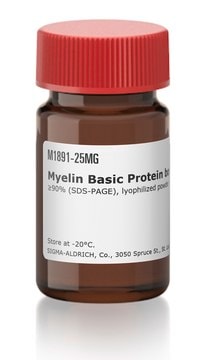P0039
PHPS1 sodium salt hydrate
≥98% (HPLC)
Synonym(e):
4-[2-[1,5-dihydro-3-(4-nitrophenyl)-5-oxo-1-phenyl-4H-pyrazol-4-ylidene]hydrazinyl]-benzenesulfonic acid sodium salt hydrate
About This Item
Empfohlene Produkte
Qualitätsniveau
Assay
≥98% (HPLC)
Form
solid
Lagerbedingungen
desiccated
Farbe
red
Löslichkeit
DMSO: 10 mg/mL, clear (warmed)
Lagertemp.
2-8°C
SMILES String
O=C1/C(C(C2=CC=C([N+]([O-])=O)C=C2)=NN1C3=CC=CC=C3)=N/NC4=CC=C(S(=O)([O-])=O)C=C4.[Na+].O
InChI
1S/C21H15N5O6S.Na.H2O/c27-21-20(23-22-15-8-12-18(13-9-15)33(30,31)32)19(14-6-10-17(11-7-14)26(28)29)24-25(21)16-4-2-1-3-5-16;;/h1-13,22H,(H,30,31,32);;1H2/q;+1;/p-1/b23-20+;;
InChIKey
KLXUVMQUEDKCKG-JBKNFAMTSA-M
Anwendung
Biochem./physiol. Wirkung
Leistungsmerkmale und Vorteile
Lagerklassenschlüssel
11 - Combustible Solids
WGK
WGK 2
Flammpunkt (°F)
Not applicable
Flammpunkt (°C)
Not applicable
Analysenzertifikate (COA)
Suchen Sie nach Analysenzertifikate (COA), indem Sie die Lot-/Chargennummer des Produkts eingeben. Lot- und Chargennummern sind auf dem Produktetikett hinter den Wörtern ‘Lot’ oder ‘Batch’ (Lot oder Charge) zu finden.
Besitzen Sie dieses Produkt bereits?
In der Dokumentenbibliothek finden Sie die Dokumentation zu den Produkten, die Sie kürzlich erworben haben.
Artikel
Protein tyrosine phosphatases' catalytic mechanism involves transient phosphorylation.
Unser Team von Wissenschaftlern verfügt über Erfahrung in allen Forschungsbereichen einschließlich Life Science, Materialwissenschaften, chemischer Synthese, Chromatographie, Analytik und vielen mehr..
Setzen Sie sich mit dem technischen Dienst in Verbindung.

![Adenosin-5′-[γ-thio]triphosphat Tetralithiumsalz ≥75% (HPLC), powder](/deepweb/assets/sigmaaldrich/product/structures/319/398/e29221c2-3649-455b-bd33-583bb017ec7d/640/e29221c2-3649-455b-bd33-583bb017ec7d.png)





